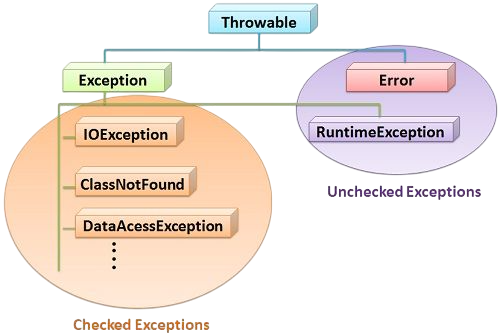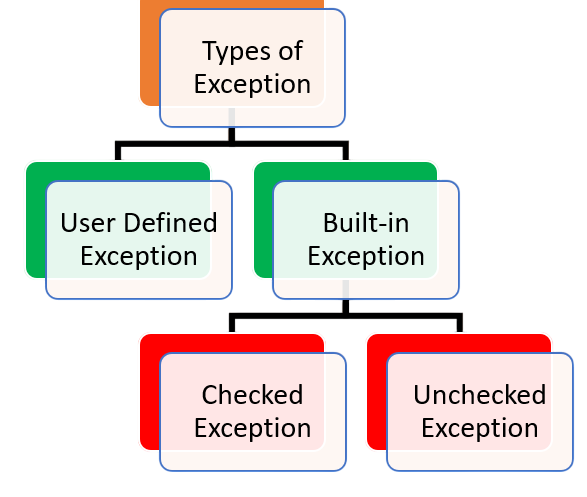
- Introduction to Exception Handling
- What is throw in Java?
- Syntax of throw
- What is thrown in Java?
- Syntax of throws
- Custom Exceptions with throw/throws
- Checked vs Unchecked Exceptions
- Best Practices
- Common Mistakes and How to Avoid
- Conclusion
Introduction to Exception Handling
Exception handling in Java is an essential concept that ensures robust and error-free program execution. It provides a mechanism to detect and handle run-time errors in a controlled manner, rather than letting the program crash. Java uses five keywords for exception handling: try, catch, finally, throw, and throws each playing a distinct role in managing runtime errors and ensuring program stability. These foundational concepts align with structured programming principles emphasized in Web Developer Training, where learners gain hands-on experience in HTML, CSS, JavaScript, and backend logic to build resilient, user-friendly web applications.

Understanding exception handling is key to writing secure and maintainable code across both design and development layers. When an exceptional event occurs, an object of a class that extends the Throwable class is created. This object is then thrown using the throw keyword. If a method might throw an exception that it does not handle itself, it must declare this possibility using the throws keyword. Understanding Throw and Throws in Java is crucial to mastering the language’s exception handling mechanism, as knowing when and how to apply Throw and Throws in Java helps developers build reliable, maintainable applications.
To Earn Your Web Developer Certification, Gain Insights From Leading Web Developer Experts And Advance Your Career With ACTE’s Web Developer Courses Today!
What is throw in Java?
The throw keyword in Java is used to explicitly throw an exception. This is helpful when you want to signal that something went wrong in the code logic or if an unexpected situation arises during program execution. Understanding frameworks like What is Angular can provide deeper insight into how structured logic supports exception handling. The throw statement is followed by an object of the Throwable class or its subclasses. The primary goal of using throw is to terminate the normal flow of a program and transfer control to the nearest exception handler defined using try-catch.
- public class TestThrow {
- public static void main(String[] args) {
- int age = 15;
- if (age < 18) {
- throw new ArithmeticException(“Age must be 18 or above”);
- }
- System.out.println(“You are eligible to vote”);
- }
- }
Syntax of throw
Throw new ExceptionType(“Error message”): is a common way to signal specific issues during runtime. When comparing how different frameworks handle such logic, understanding AngularJS Vs Angular 2 Vs Angular 4 reveals how architectural shifts influence exception handling and error propagation.
- ExceptionType: This is a class that extends Throwable, such as ArithmeticException, NullPointerException, IllegalArgumentException, etc.
- Error message: This is a string message describing the exception.
Rules for Using throw in Java:
- Only one object can be thrown at a time.
- It must be of type Throwable.
- The throw statement should be followed by a try-catch block or declared with throws.
When to Use throw:
- When input values are invalid or don’t meet expected constraints.
- When the method logic encounters an illegal or unexpected condition.
- When you want to enforce business rules through code validation.
- To signal the failure of a method deliberately.
Example in Custom Validation:
- public void setSalary(double salary) {
- if (salary < 0) {
- throw new IllegalArgumentException(“Salary cannot be negative”);
- }
- this.salary = salary;
- }
What is thrown in Java?
The throws keyword is used in method declarations to indicate that the method might throw one or more exceptions. It tells the compiler and the programmer that this method does not handle certain exceptions and the calling method must deal with them a concept that reinforces structured error management practices taught in Web Developer Training, where learners gain hands-on experience in building robust web applications using HTML, CSS, JavaScript, and backend technologies. Understanding exception propagation is key to writing maintainable code across both design and development layers.
Example:
- public void readFile(String filename) throws IOException {
- FileReader file = new FileReader(filename);
- }
It helps propagate exceptions up the call stack until they are handled by an appropriate try-catch block.
Would You Like to Know More About Web Developer? Sign Up For Our Web Developer Courses Now!
Syntax of throws
- returnType methodName() throws ExceptionType1, ExceptionType2 {
- // method body
- }
Rules for Declaring Exceptions in Java:
- You can declare multiple exceptions separated by commas.
- Only checked exceptions need to be declared using throws.
- Unchecked exceptions (like NullPointerException) do not require declaration.
- If a method calls another method that throws a checked exception, it must either handle it or declare it.
Custom Exceptions with throw/throws
Creating custom exceptions allows developers to define application-specific errors that are more meaningful than standard exceptions. While working across different languages, understanding distinctions like TypeScript Vs JavaScript can help clarify how error handling strategies vary. These are created by extending the Exception class (for checked exceptions) or RuntimeException (for unchecked).
Example: Custom Exception
- class InvalidAgeException extends Exception {
- public InvalidAgeException(String message) {
- super(message);
- }
- }
- public class Voting {
- public void checkAge(int age) throws InvalidAgeException {
- if (age < 18) {
- throw new InvalidAgeException(“You are not eligible to vote”);
- }
- }
- }
Using this approach provides flexibility and clarity in large applications.
Are You Interested in Learning More About Web Developer? Sign Up For Our Web Developer Courses Today!
Checked vs Unchecked Exceptions
Exceptions in Java are categorized into two main types: checked and unchecked. To better understand how structured programming influences error handling, exploring frameworks like What is React can offer valuable context. These distinctions help developers manage predictable and unpredictable failures more effectively.
- Checked Exceptions: These are checked at compile time. You must handle them using try-catch blocks or declare them using the throws keyword.
- Examples: IOException, SQLException
- Unchecked Exceptions: These are not checked at compile time and typically arise from programming errors.
- Examples: ArithmeticException, NullPointerException

Use with throw/throws:
- throw is used with both checked and unchecked exceptions.
- throws are required only for checked exceptions.
Best Practices
- Use meaningful custom exceptions: Instead of generic types like Exception, define specific exceptions such as InvalidUserInputException for clarity and maintainability.
- Do not overuse throws: Excessive declaration can clutter method signatures and reduce readability. To write cleaner, more maintainable code, developers often refine their practices as they Become a PHP Developer and learn to balance clarity with functionality.
- Always clean up resources: Use finally blocks or try-with-resources to properly handle open files, streams, or connections.
- Never suppress exceptions: Always log or propagate exceptions to ensure visibility and traceability of errors.
- Document thrown exceptions: Use Javadoc to describe potential exceptions, helping developers understand failure points and handle them appropriately.
- /**
- * @throws InvalidAgeException if age is less than 18
- */
- public void validate(int age) throws InvalidAgeException {
- if (age < 18) throw new InvalidAgeException(“Invalid age”);
- }
Common Mistakes and How to Avoid
Throwing a String/Object instead of Throwable
- // Incorrect
- throw “Error!”; // compile-time error
- // Correct
- throw new IllegalArgumentException(“Invalid input”);
Not Handling Checked Exceptions
- public void readFile() {
- FileReader fr = new FileReader(“file.txt”); // compile-time error if not handled
- }
Not Handling Checked Exceptions
- public void readFile() {
- try {
- FileReader fr = new FileReader(“file.txt”);
- } catch (IOException e) {
- System.out.println(“File not found or unreadable”);
- }
- }
Declaring unchecked exceptions unnecessarily
- public void divide() throws ArithmeticException {
- // unnecessary throws declaration
- }
Catching Exception instead of specific types
- catch (Exception e) {
- // bad practice – hides real exception cause
- }
Conclusion
Understanding Throw and Throws in Java is vital for building stable, scalable, and maintainable applications. They empower developers to implement a structured and informative approach to error handling, ensuring that runtime issues are not only caught but also appropriately addressed or propagated. While throw is used to manually initiate an exception, throws is a declaration that a method might generate an exception a distinction that reflects structured programming practices emphasized in Web Developer Training, where learners gain hands-on experience in HTML, CSS, JavaScript, and backend logic to build resilient, user-friendly web applications. Understanding how exception handling integrates with design workflows ensures smoother development and better debugging across full-stack environments. Together, Throw and Throws in Java provide a powerful mechanism for separating error-handling logic from core business logic. By following best practices, avoiding common mistakes, and writing meaningful exception messages and types, developers can build systems that are not only robust but also easy to debug and maintain.



